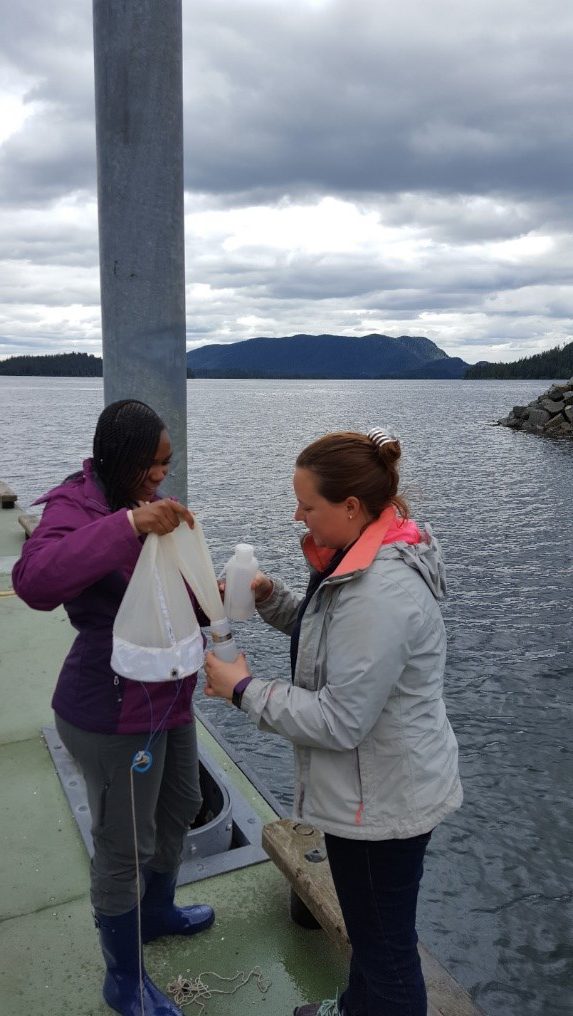
NCCOS has provided the Sitka Tribe of Alaska with funding to expand monitoring and toxin testing of an active bloom of Pseudo-nitzschia in the city of Sitka’s coastal waters in southeast Alaska. Some species of the marine alga Pseudo-nitzschia produce domoic acid, a potent neurotoxin that can accumulate in shellfish that feed on Pseudo-nitzschia and can lead to amnesic shellfish poisoning in people who eat tainted shellfish.
In July, elevated concentrations of Pseudo-nitzschia at tribal monitoring sites around the city of Sitka raised concerns about domoic acid, prompting the Sitka Tribe of Alaska Environmental Research Laboratory (STAERL) to increase algal monitoring. Water sampling results revealed a toxic Pseudo-nitzschia bloom threatening Sitka community shellfish harvesting.
In Alaska, commercially harvested shellfish sold in stores and restaurants meet federal Food and Drug Administration–approved and state-run toxin testing requirements and are safe to eat. However, there is no routine state-run algal toxin testing of shellfish harvested for recreation, subsistence, or ceremonial use.
To ensure access to safe shellfish and increase regional food security for southeast Alaska, the Sitka Tribe of Alaska formed the Southeast Alaska Tribal Ocean Research (SEATOR) Tribal Toxins network, which monitors harvest locations for harmful algal blooms, their toxins, and other threats. SEATOR now includes 16 tribal governments and monitors over 30 sites using sampling techniques and toxin analysis methods developed and transferred from NCCOS scientists and the NOAA Phytoplankton Monitoring Network. Historically, paralytic shellfish toxins have been the most significant algal toxin threat to subsistence harvesters, but with the emergence of domoic acid, STAERL and SEATOR capabilities are strained.
The NCCOS Harmful Algal Bloom Event Response Program funding will equip STAERL and partners with test kits and filter supplies needed for a comprehensive rapid screening across SEATOR subsistence harvesting sites. The effort will leverage expertise at NOAA’s Northwest Fisheries Science Center for confirmatory identification of local Pseudo-nitzschia species. Results will help STAERL assess the feasibility of adopting a multi-level phytoplankton and water sample domoic acid screening process similar to the one used in the state of Washington for effective early warning of shellfish toxicity. Domoic acid is expected to become a greater threat to subsistence shellfish harvesting in southeast Alaska as water temperatures increase.
For more information, contact Marc.Suddleson@noaa.gov.
